Posts
Featured Post
Search this blog
हम गये बनारस - We visited Varanasi
- Get link
- Other Apps
This is a travel blog recount of our three and a half day visit to Varanasi. I won't bore you with the history of the city, as that can be read from other sources on the internet. Here I have narrated our pilgrimage along with names and/or contact details of hotels, restaurants, boat bookings, taxi drivers. I have also mentioned day wise places to visit along with applicable timings.
My mother wanted to visit Kashi and offer her prayers to the revered Shivji (Kashi Vishwanath) the presiding deity at Varanasi. She had expressed her desire a year back in 2022. As soon as I received the holiday calendar from my office I checked available long weekends and the nearest suitable date was during the Hindu new year of Gudi Padwa on 22nd March 2023 that fell on a Wednesday. Taking train from Bangalore was out of question as it would take 46 hours to reach. So we booked flight tickets. Our flight was scheduled to leave at 11:50 am from Kempegowda International Airport Bangalore and reach Varanasi at around 2:30 PM. However, luckily for us, we reached half an hour early at 2 PM. Its a general practice of Indigo airlines to declare arrival timings 15 to 30 mins later so that they can claim they have landed before time.
I had done some internet search on how to visit the Kashi Vishwanath Temple, its timings, procedure, ticket bookings etc. There is a facility called "Sugam Darshan" which is VIP visit. You need to book tickets in advance online from this website. You need to create an account and enter your contact email address. The ticket will be emailed to you. The ticket price is 300 Rs per person. We had booked 3 tickets in the time slot of 5pm to 6pm. There are many services that the temple trust provides such as "Mangal Aarti" which takes place at 3 am in the morning, Bhog aarti etc. You can avail any of such services online from the same website mentioned above. Nowadays, Mangal Aarti can be booked only 15 days in advance. There is no facility of Immediate or same day booking. These rules and situations change and you can inquire about the same by sending a chat message on this Whats App number: +91 6393131608.
As we reached Varanasi airport by 2:15 pm on 22nd March, 2023, we had enough time to check-in to our Hotel room and change to the prescribed dress code to be followed to visit the shrine. We took a pre-paid taxi from the airport to our hotel which cost us 700 Rs. The taxi driver name is Mr. Pandey and his contact number is 8874031266. You can contact him to arrange for your rides to and from Varanasi to airport or nearby sight seeing. We did not avail his service as we had booked another taxi service (from my fathers office contacts). I cannot share details of that taxi service, but there are plenty of agencies in Varanasi that provide taxi. Our taxi driver charged us 10 Rs/Km with minimum run of 200 Kms per day. Thats 2000 Rs per day, which might seem costly but we can call up the taxi any time we want especially useful when you want to attend the mangal aarti at 3 am in the morning or start your morning boat ride at 6 am in the morning.
We stayed at Hotel Jade Inn on Central Jail road and the rooms cost us 3000 Rs per night including GST. Breakfast was included. The rooms were clean, toilet and bath was clean no foul smell, AC and geyser was functional. Breakfast was good. Service was good. Hotel was 5 kMs from the Temple. We took an auto-rickshaw which dropped us at "Maidagin" crossing. You can google it on maps. Vehicles are not allowed beyond this point and you need to either walk or take a hand rickshaw till the temple gates. Temple is around 800 mts from Maidagin crossing. We walked all the way to the temple Gate 4. Then went to the Vishwanath Trust Help center few metres from the temple gate 4. We showed our ticket print out to the in-charge and he assigned a Panditji to us to take us to the temple. They also provided a locker to keep our belongings. Mobile phones, purse, wallets belts, bags etc are not allowed inside the temple premises. They also gave us prasad boxes. By the time we started towards the temple it was 4 pm, and right on time for the "Sparsh Darshan" where devotees are allowed to touch the Shiv lingam. Panditji took us through security and asked us to join one of the devotee queues near the shrine. Here I must mention that the queue management is pathetic. instead of having a single queue for VIP darshan, they have 4-5 queues and all queues converge at a small gap near the shrine, where only one person is allowed to move forward. So there is utter chaos and chance of altercation at the gap and the police isn't interested in managing it. The trust employees themselves suggest devotees to fight it out instead of managing the rush. Somehow me and my parents managed to cross the gap and took darshan of the Lord. My mother however in the chaos couldn't touch the shivling, so panditji suggested us to request the police guard to allow my mother to have one more darshan. Luckily the guard obliged and mother could take another quick darshan. I would advise to take "Sugam Darshan" tickets instead of going for the common darshan, as there is lot of rush even for the VIP darshan. Many devotees are not able to complete there darshan in the common line due to the rush.
It was 6 pm and we had to go to the "Ganga Aarti" at dashashwamedh Ghat. We followed the sign boards through the narrow lanes of Varanasi going with the flow of heavy traffic. We reached Dashashwamedh Ghat and took a spot where we could clearly see the Ganga Aarti. The aarti happens daily and a huge crowd gathers to witness it. There are boats near the ghat that take devotees to see the aarti from the front. We did not see the complete aarti as it was becoming late and it was too crowded. We had already witnessed Ganga Aarti at Rishikesh and Haridwar so it was not something new to us. It was 7:15 pm and we came back from the ghat towards the market area and google maps was showing "Deena Chat Bhandar" nearby. It is a well known shop in Varanasi. So we went there to have chat and falooda. Tomato chat is a new dish to try out in Varanasi. Apart from that, Tikki chat, papdi chat and kulfi falooda is also delectable. We took an auto-rickshaw from the shop back to the hotel. We did not have dinner that night and slept early.
On 23rd march, early morning at 5:30 am the taxi driver picked us from the hotel to ravidas ghat. Earlier before coming to varanasi, I had booked a morning boat ride from Varanasi Boat Booking contact 9120657980. It costs 2000 per family or group and you need to pay half the money in advance. At 6:30 am the boat ride starts from the Ravidas ghat. It takes an hour or more on a diesel boat steering along the banks of Ganga where you can view all the ghats till Manikarnika Ghat. Each ghat has a different story and history and significance. After reaching Manikarnika ghat the boat returns back to ravidas ghat. You can read about the different ghats in the internet. But Manikarnika ghat and Harishchandra ghat is where there is constant burning of dead bodies. You can also see the Kashi Vishwanath Corridor Gate 1 opening on the banks of the Ganga. We could see devotees taking a dip in the ganga on many ghats. Although the water of Ganga at Varanasi is not suitable to take a bath or drink. Still its peoples faith that guides them in following age old customs.
After the boat ride we went back to the hotel to take breakfast. At 9:15 am we left hotel towards Banaras Hindu University Campus (BHU). We visited the Bharat Kala Bhawan Museum. Mobile phones and wallets/purse etc were not allowed and locker facility was available. The paintings rock sculptures kept at the museum are vary old. The paintings are worth seeing. There is another temple dedicated to Lord Shiva inside the BHU campus. We visited that and luckily we were present just before closing hours. Just before closing there was a small procession where Pujaris played the "Dumroo" (Shiva's Instrument). The sound of the dumroo is such that you can not hear anything else in the hall and it creates a moment of peace within your mind. Afterwards, we went to visit the Sankat Mochan Hanuman Temple, however it is closed from 12 noon to 3 PM, so we decided to check out Ramnagar Fort.
The fort is on the eastern bank of Ganga and need to take a bridge to cross the Ganga. The royal family still lives in the fort. The ticket is 75 Rs per person. It has huge collection of vintage cars, carriages, palaquins, carts, pistols, canons, swords, bows arrows, royal clothes. The vintage car collection however is not well maintained, atleast they could have dusted the cars. You can walk on one of the bastions of the fort and view the Ganga and its banks. We had rabdi lassi outside the fort and it was just too good. Afterwards we returned to sankat mochan hanuman temple and this time only my parents went inside, I was feeling sick due to the sun and exhaustion. After the hanuman temple, Tulsi Manas Temple was on our way back, however that too was closed and would open at 4 Pm, we decided to skip it and go to Bharat Mata Mandir, which was close to our Hotel. The Bharat mata mandir has a huge map of Indian Subcontinent on the ground, made of cement. It shows the himalayas, sri lanka and various mountain ranges in India. We returned back to our hotel and called it a day.
Next day, 24th March, Prime Minister Narendra Modi was visiting Varanasi. So it was impossible to plan any sight seeing within the city. So we decided to view few spots outside the town, like Rajdari and Devdari waterfalls. They are around 65 kms from the City. The waterfalls were completely dry however, they did seem to be a nice picnic spot. Then we went to Chunar Fort which also has a long history going back to 16th Century. We could see a shallow sand bank of Ganga near the fort, so we went there and dipped our feet. We returned back to the city and had chat and Pani puri at Baba chat bhandar. The pani puri was superb, chat was excellent. We also had warm fresh Rasgullas from adjacent Bengal sweet house. We returned back to our hotel and called it a day.
The last day of our trip 25th March was also going to be packed with visits. We had missed the Kaal Bhairav Mandir near Maidagin Crossing. Also we had not seen the Kashi Vishwanath Corridor. So we started at 9 am and first reached the Kaal Bhairav temple. As usual the queue management was pathetic. We almost went in a wrong direction and wasted some time joining the correct queue. Later we went inside the Kashi Vishwanath Corridor. We had to take a hand rickshaw from Maidagin crossing to gate 4. The corridor is huge, at the beginning you can see the Gyanwapi Mosque then later few small temples such as dedicated to Lord Hanuman. Further we can see the shrine where mobiles, bags, etc are not allowed, but the corridor can be explored with mobiles to take snaps. There is a statue of Devi Ahilyabai Holkar who established the new Kashi Vishwanath temple in the 17th Century. The original is said to be demolished by Aurangzeb where the Gyanwapi Mosque was constructed. There is a statue of Adi Shankaracharya, who is instrumental in spreading Hinduism to all corners of India. Further we can see the ghat and the viewing galleries. The banaras ghat road also starts from here. You can walk all 80 ghats from Manikarnika to Ravidas ghat on the ghat road. There is a food court inside the corridor. Juices, snacks and other varieties are available. Our last stop of the trip was Sarnath which is 20 Kms from varanasi. It is the place where Gautam Buddha gave his first Sermon. Where the first conversion to buddhism happened. The ruins date back to 6th Century BC, 2500 years old. It is advised to hire a GOI sponsored guide, else there is nothing much one can make out of the ruins. You must hear the stories associated with ruins of sarnath. We reached the airport from sarnath at around 6:30 pm for our return flight to Bangalore. It was a memorable experience and if time permits, I will definitely visit banaras again, for some different agenda like exploring the ghats deeper. Until next time.
Few points of advise:
People here like to break rules, specially the devotee queues, so one has to be vigilant. The city has become quite clean and the foul smell has reduced, ghats have become very clean, can't say much about the Ganga, so not advised to drink water. Better avoid taking bath. Vehicles (4 wheelers, auto rickshaws) are not allowed near the market, corridor and beyond maidagin crossing. Depending upon your priorities choose a hotel. For instance, the next time we visit kashi, we will not be revisiting the sights again, our priority will be the darshan and markets, so we will choose a Hotel like Alka, Ganapati guest house and such. Inquire the temple trust a month before about the timings, dress code etc.
Writing a Poll Mode Driver (PMD) for DPDK
- Get link
- Other Apps
Writing a PMD for DPDK

As mentioned in the previous post in this series about DPDK, I have
shared how to prototype L2/L3 applications using DPDK library
without any dependency on Hardware (Physical/Emulated).
In this post, I share how to write a PMD (Poll Mode Driver) for
DPDK, off-course, it will not cover all the enhancements and features present in industry grade drivers, which you can explore in
the existing PMDs in the DPDK source. Advanced features include,
queuing algorithms for QoS, Offloading features for Protocol
offloading, Protocol Parallelization features.
Here, we see how to write a PMD for a Network Interface Card,
most commonly found on your Desktop/Laptop, Realtek NIC card. The Realtek NIC on the physical hardware is 8136however, there is also a qemu-kvm based emulated NIC which can be configured on the virt-manager “8139”. Another emulated NIC e1000 exists which also has DPDK support, which also helps in doing tests to compare working and non-working implementations. Hence, I chose 8139 device to write a PMD. There is currently no PMD for Realtek 8139 devices, so its a good exercise to explore how PMDs are written as well as device drivers in General. The realtek NIC support in qemu-kvm is open-source and freely available. Writing a PMD for it should be considered purely educational and gives no competitive advantage over any other entity. Few years back, I attended a workshop from sysplay.in, and although I am not a driver developer currently, this was inspired from that session. It is a must attend workshop series for anyone who is interested in System Software interaction with hardware.
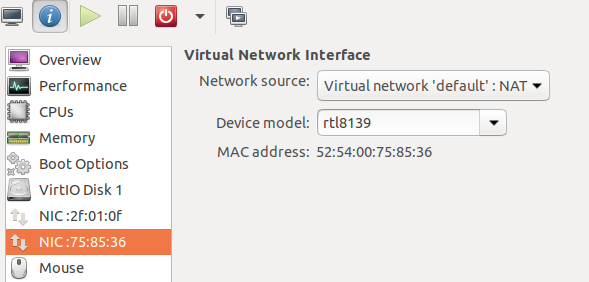
Using Virtual machine also helps to setup test environment on the host. For this purpose, my test environment includes 2 virtual machines running Ubuntu 18.04. I have enabled 2 NICS ( A & B) per Virtual machine. The goal of this experiment is to run dpdk-pingpong app as client and server. I used 1 virtual machine as a pingpong server on NIC-B which was based on e1000 emulated NIC, while the pingpong client is based on rtl8139 device (again NIC-B).

1. What is a PMD (Poll Mode Driver):
If you have gone through DPDK in general, the processing of IOs and Network packets, is being pushed to userspace. Whenever a device needs application to work dedicatedly towards processing IO or Network packets, you need to bypass the kernel storage/networking stack and directly access the hardware. The reasons to skip kernel is to avoid multiple copies of data before its processed, as well as, avoid multiple copies in the other direction as well.
2. How to access hardware directly in User space:
The linux kernel has features (kernel modules) to work with hardware directly. The Userspace-IO is a kernel module that exposes device registers to userspace applications through files. The user-space application then simply needs to open the binary files and access specific offsets of the device registers.
3. How DPDK uses PMDs:
DPDK has build options to compile your driver as a shared library or compile everything as a single combined library.
These options can be set/unset through the “.config” configuration file present in the build directory. Like the Linux kernel, DPDK provides software bus enumeration and device registration facility which your driver should use to register itself to the bus. All the bus enumeration and device registration happens either before your main() gets called, or through library provided function later called for init.
4. Testpmd to test your driver:
DPDK provides a testpmd application to test your driver. However, its not straightforward to integrate your driver with the application since, there are no generic function pointers provided to work with the driver functions, hence you separately compile your driver as a library and then compile the
testpmd alongwith the driver library to use the driver. You also need to write multiple #ifdefs and #if defined MACROs for your Vendor specific driver to call functions directly to setup the device. I instead used the dpdk-pingpong application which works in client and server mode. So I can send ping packets using the custom PMD that I have written to the server.
5. How to write the basic framework:
All DPDK compatible PMD drivers are present under the drivers/net hierarchy, so we will have to add a directory for our vendor specific driver here: drivers/net/realtek. We need to add the configuration options to COMPILE source under our driver directory in build/.config, CONFIG_…
In the driver directory, the Makefile should export headers which contain all functions that our testpmd would call, and finally in the testpmd make a provision to include our driver library before compiling.
DPDK framework provides following list of function pointers for
any PMD to implement.

As I said earlier, it is not necessary to implement all of these, and you can keep many of them as “nop”. The typical order in which the dev_ops are called is as below:

So, based on this sequence and carefully studying an existing Linux driver for the same device (or if you wish to directly right a PMD, I think you should still refer to an existing implementation for device programmability), I am able to port the 8139cp.c driver in linux-4.15. Essentially, the probe function calling the init of the driver, can be accommodated in the .dev_configure and .dev_start routines. Setting up the TX queues for establishing DMA addresses should be done in the .tx_queue_setup. The DMA APIs like dma_alloc_coherent() have counterparts available in the DPDK library:

We attach our eth_dev_ops to dpdk provided eth_dev structure dev_ops handle. Also the 2 functions required to Transmit and Receive packets are also assigned to the DPDK provided handles, “realtek_recv_pkts” and “realtek_xmit_pkts”. We store the Register Space Base address from BAR1 into our device specific private structure struct realtek_eth_hw. The BAR1 is the non-prefetchable Memory mapped IO space provided in the lspci -vv output:

To transmit the packets refer to the below datasheet section:
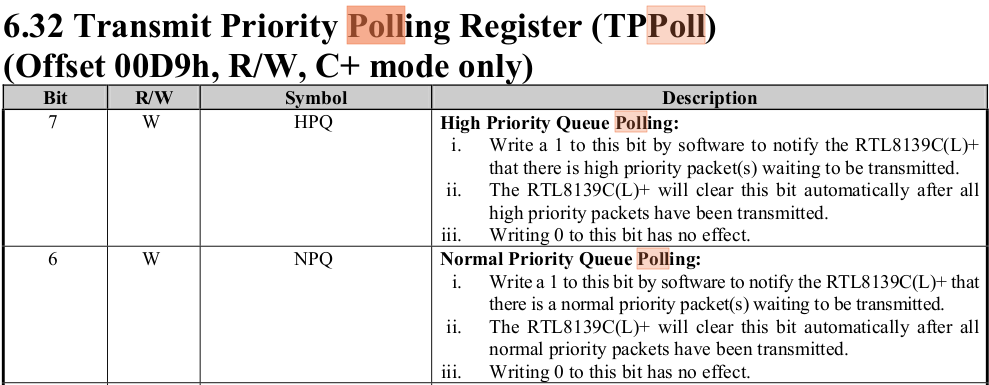
As soon as rte_mbuf packet is filled into the already established TX descriptor space, we can set the NPQ bit in the TPPoll Register. The device will take care of sending the packets for you. It will also set TxOK flag in the Interrupt Status register as stated below:


So based on the above description, your status should read 0x4 for TxOK.
Few tests which I ran to confirm the address is being accessed correctly:
(these are device specific, so I will share the relevant data sheet section for reference)
1. Test the Device reset functionality:


As per the datasheet, I must write a Reset command to the Command Register. Then the device does a soft reboot and Resets (=0) the value of the Command register. To test this poll the command register for few seconds and if the Command Register is not reset to 0 then mark timeout and return error.
2. Run pingpong application to test the TX functionality:
On the VM-A where we use e1000 NIC, will work as a pingpong server.
On the VM-B where we use rtl8139 NIC, will work as a pingpong client.
At the time of writing this blog, I have not written the RX functionailty hence using the rtl8139 side for sending Pings alone, pongs would be sent by server, but not reported. Follow the instructions mentioned in the dpdk-pingpong github repository to build and run the app as client or server. Use “-l 0,1" instead of “-l 1,2” in case you only configure 2 CPUs in virt-manager.

Graphviz for Network Visualization
- Get link
- Other Apps
Coorg — Coffee, Homestays and much more
- Get link
- Other Apps
Coorg — Coffee, Homestays and much more
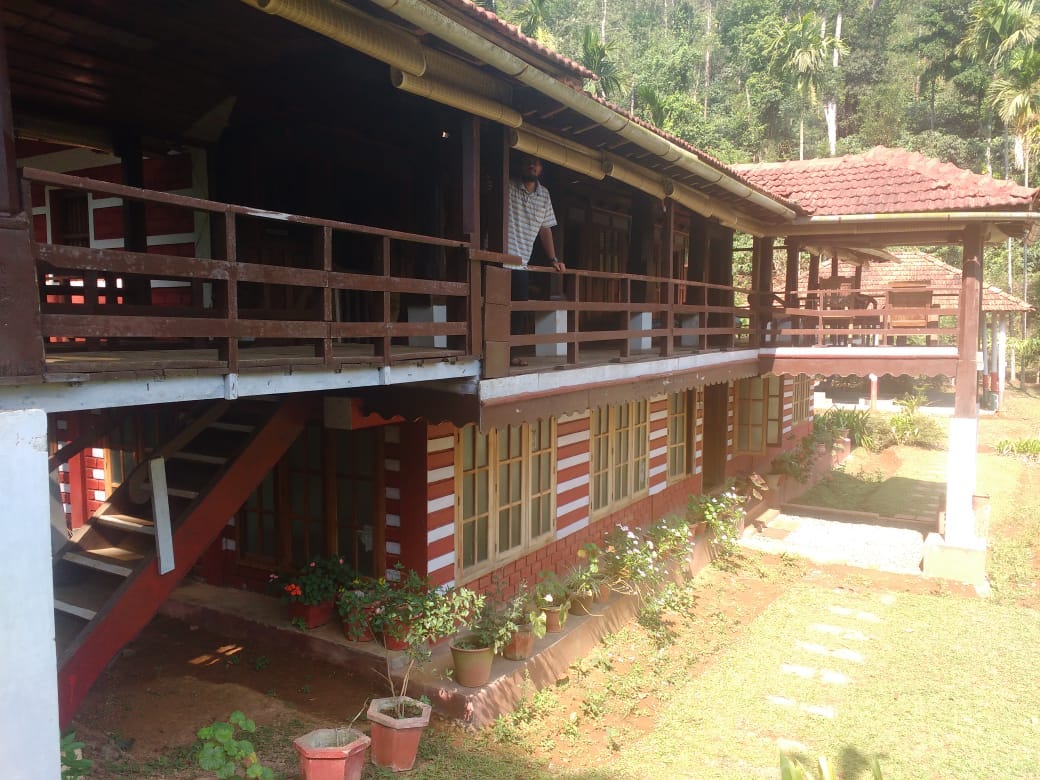
Among the hill stations of India, Coorg has a special significance, Army Generals — Kariappa, Thimaiaha. Air Marshal K C Nanda as well as Defense Minister V.K. Krishna Menon are among the well known natives of Coorg (or Kodagu as the natives would call it). I was in Mysore, last in 2012 for my training in Infosys and missed visiting Coorg before I moved to Chennai. This time around, with due diligence, to cater to my parents holiday request we planned a short three day trip.
Coorg is famous for its home-stays (which is a way to commercialize your private house on a beautiful estate of coffee plants). It gives an opportunity to a city dweller like me to enjoy nature while staying in its midst, clean environment, fresh air and homely food all at a single place. I belong from konkan in Maharashtra and hence I am well aware of all these benefits, hence, if I get an opportunity to stay in a cottage, I always prefer that over a resort. We booked our arrangements from https://www.coorghomestays.com/, which seemed to me as an association of estate owners registering there properties for the general public to use.
Wild woods cottage is owned by Mr. Mukul Apaiaha, a 2nd generation plantation owner, and his estate spans a humbling 40 acres. Like the Thimaiaha’s and Kariappa’s of Coorg, Mr Apaiaha also has a proud military history associated with his estate. His father was in the Indian Army and invested in the estates early on. There were 2 cottages on the property both fifty plus years old, and had the traditional monsoon house style of architecture. My father explained to me the terms, Khidki and Phadki which a Darwaja is divided, the more common among them being khidki (window) while phadki meant the lower section of a door. The wood would have the best variety available locally, his dining table chairs were super heavy which made the quality evident. There was a small Porch with a central table and chairs on the upper floor, much like an observation deck for residents like us. His cottage is managed by Shantu (called with a Bengali pronunciation), and Gopal. On the night we reached the cottage, shantu guided us from the Kemalekad Estate gates to there abode. He has been given a jeep to pick-up and drop tourists and for other purposes. We had a good dinner, simple food, and Rasgulla for desert. We were already getting a feel of the weather change from Bangalore to Coorg, also it had rained so it was quite cool. We good see Fire Flies in the dark of the jungle around.
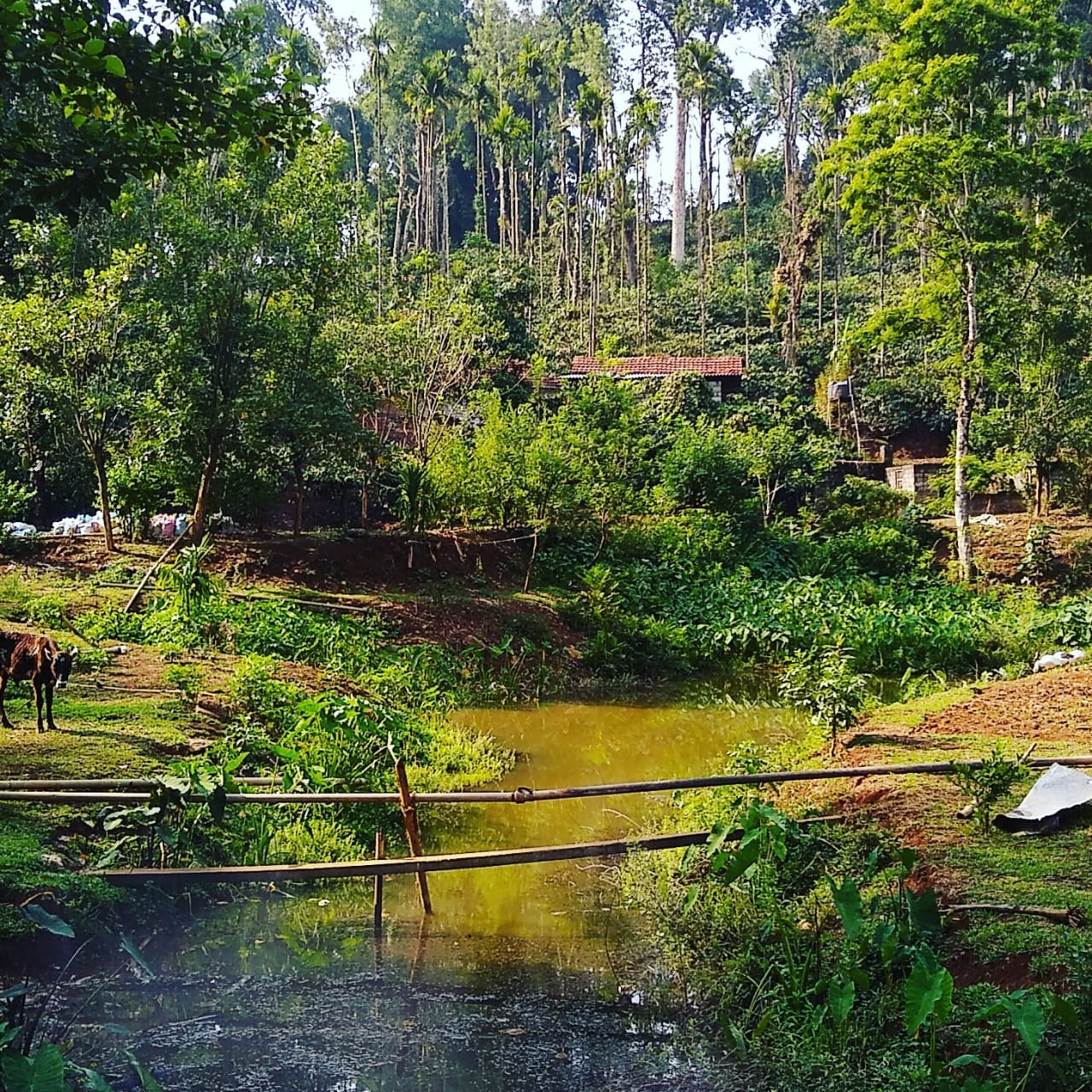
That day in the morning, we had taken the Srirangapatna route from Bangalore. On the way, we visited, Sri Ranganath Swamy Temple, and few places connected with Tipu Sultan, like the Daulat Baug on the banks of Cauvery. Been completed my quota of Temples (which I have also posted in COLORS of SOUTHERN INDIA.)
I was more inclined towards the historic gardens of Tipu Sultan. I was reminiscing about my visit to Kashmir during my childhood where I had visited Shalimar and Nishad baug near the Dal Lake. But that architecture can be witnessed at the Vrindavan Gardens in Mysore. Here its more of a lawn and a garden, rather than the water fountains. Tipu sultans summer cottage is well maintained and since it was a working day, we could patiently view all the exhibits. There were huge murals depicting the Anglo-Mysore wars, and paintings by British painters depicting the times then, and forts built around Mysore. ( I have made a point to trace down all the forts built by Tipu Sultan in subsequent days).
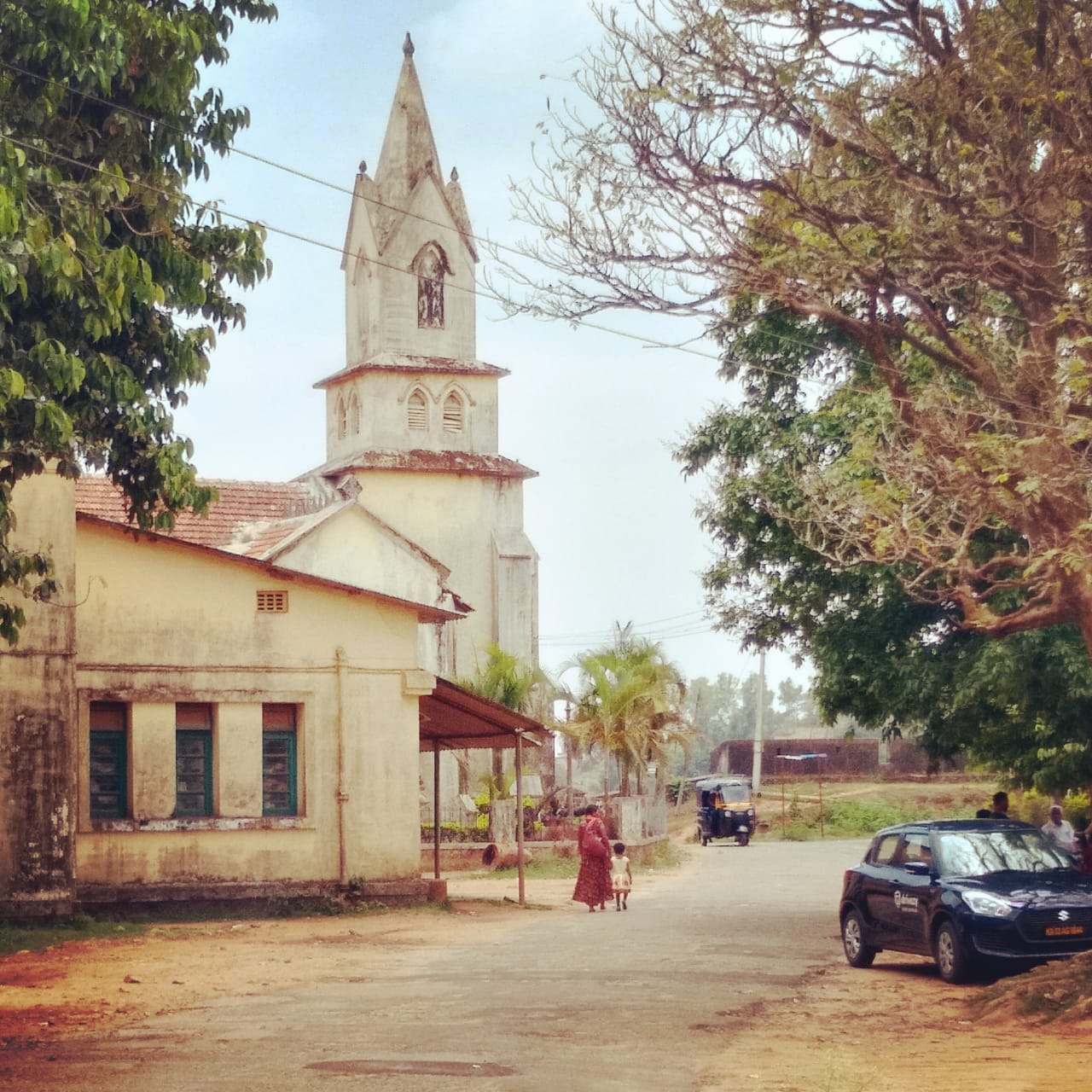
We visited the Namdroling Monastery the largest teaching center of the Nyingma lineage of Tibetan Buddhism in the world. The entire town of Bylakuppe is established to refuge the many thousands of Tibetan monks and lamas who fled during the Chinese aggression. The monastery has multiple temples with huge statues of Gautama Buddha, and vivid colorful murals depicting his life at lumbini, where he was born, Bodhi tree where he attained enlightenment and further years of his life. Earlier I used to believe that Tibet had a single spiritual leadership, under the Dalai Lama, Tenzing Gyatso, the famous monk who we granted refuge at Dharmashala in Uttarakhand. Turns out there are four sects within Tibetan Buddhism. Nyingma sect or school being the oldest among it. The other three are Kagyu, Sakya and Gelug. In contrast to the other three main Tibetan schools, the Nyingma tradition has never been the dominant political power in Tibet. The Dalai Lamabelongs to the Gelug school and has been politically, more stronger in terms of its followers.

On the way, is a small catchment dam over Cauvery, Balmuri Falls. It’s a good weekend getaway stop for groups to enjoy a free water park experience. The next day was leisure time for us at the cottage, I explored the area around. Plenty of ponds and domesticated animals, ducks, cows, dogs. There is an internal trail around the entire forty acre estate and shantu promised to show us around on the third day before we checked out. We had breakfast and set out for remaining site seeing. We could witness the beauty of Coorg in daylight which we missed while arriving due to rains and by the time we reached it was already dark. Surrounded by coffee plantations and paddy fields, my father explained the resemblance to Tea plantations in Assam. Atop the hill will be the plantations and downhill paddy fields which helps in proper water management. We visited abbey falls, which seemed to be a perennial waterfall, but it would be definitely great to visit it post monsoon when it would be flowing at full capacity. Raja seat and Madikeri Fort were near Madikeri Town. The fort is now a converted court and government office but still has some essence of the British occupancy. Thalakaveri is a religious site where the Kaveri river originates. My parents especially liked the temple and kund, from where the river water flows downhill. We purchased spices from the local society shop and some ginger wine, Coorg also specializes in homemade wines, from ginger, gooseberry, pomegranate, beetle leaf and paddy. We had tea back at the cottage and relaxed listening to jungle sounds, birds calling and insects screeching.
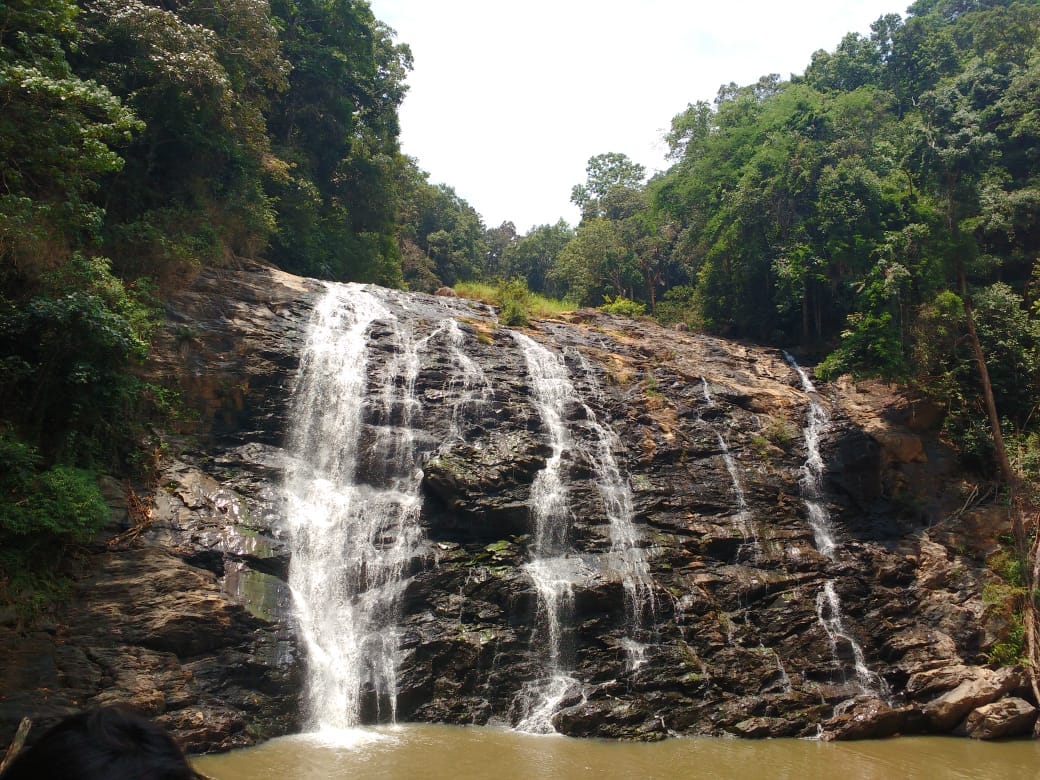
Coorg, the “Land of generals” hasn’t had a peaceful history pre-independence. Before the British, the kodavas (natives of kodagu) had to fight back Tipu sultan. In a bid to overthrow Tipu sultan the Kodavas sided by the British which allowed them to access certain privileges till date (more about that can be read here:https://www.outlookindia.com/magazine/story/coorg- diary/298952
It is my reasoning, that Coorg enjoyed a special status in the Armed forces, as well as before, during the British rule, in spite of having a small area and weaker in resources as compared to the neighboring states like the Madras, Bombay, Travancore and Mysore presidencies. In recent times the number of candidates for the armed forces has reduced.
The next morning, as promised, shantu took us for a hike around the estate. There was plenty more to see apart from the area around the cottage. He indicated to us the path of elephants passing the estate when in dire need for water. The elephants need to be driven off by making drum sounds. The trail went up hill and all I could see were coffee plants. This was my first experience of a plantation, my virtual experience was with Django and the Doctor in Quentin Tarantino’s movie. Shantu explained the different coffee varieties Arabica and Robusta. He shoowed us how the coffee plant is bent down after a certain height so it does not grow upwards but expands horizontally. This helps in better yield as well as easy plucking of the coffee beans. He also provided some manure rich organic compost as a complimentary gift while returning.
There were still places we didn’t touch like the dubare elephant camp, and intentionally wanted to make the trip less hectic. Would mark these places for a much impending visit soon. Till then cheers on the Ginger wine…
How I travelled at home during Covid-19 Lockdown
- Get link
- Other Apps
All the travel enthusiasts are yearning to move out and resume there wander lust. However this lockdown doesn't seem to end. Given that it may go on for another month, I decided to share few interesting things which I did sitting at home to pacify my hunger for travel, geography and spirit of exploration.
1. Watched 'The Grand Tour' on Amazon Prime:
Although the show was originally based on evaluating different Cars/Super Cars (it was called BBC Top Gear), this time, the presenters/producers of the show gave a twist to it which any explorer would love to watch. Most of the episodes takes the 3 veteran presenters Jeremy Clarkson, Richard Hammond and James Maydo scripted heroic acts at extremely scenic and never heard before (or only heard before in magazines) locations. The show takes you to most isolated areas of Mongolia, The Sahara desert, The pristine Namib desert, the Alps. In one of the episodes, we drive through Spain on 3 Grand Tourers, on a scenic route. The show is a mixed bag of travel, adventure, humour, and Automobiles.
2. Read Lonely Planet's Guide for Fiji and Unpacked Again Stories.
I do not just like visiting places, I also read books on exploration, write my experiences and even participate in Travel and Tourism quizzes. I had purchased a bunch of books from "Bookchor's" "Books by weight" sale that frequently gets put up in the city. Although the guide is pretty old, but it gives you a first hand experience of Fijian Culture and its history, cuisine, places of interest, Do's and Don'ts.
The lonely planet "Unpacked Again" is a series of books that share quirky tales and Close encounters of Lonely planet Travel writers and staff. Revealing the challenges that lie in wait for budding travel writers, this book is an eye opener about the hazards and difficulties in a life of a travel writer that is hidden behind the pictures.
3. Travel through VR apps
As the lockdown started, I saw many posts regarding Google's VR app that showed 3D animal figures in front of your home backgrounds. As a Travel enthusiast I couldn't think of anything else but to check out different apps available on Google Play Store that provide 3D and VR based tours of most famous places of interest around the world. 2 Apps that I found worth downloading and keeping indefinitely are SiteVR and Expeditions. Both have a good UI and give a very immersive VR experience. I have visited Egypt and its Pyramids, Eiffel Tower, Mount Rushmore just to name a few places.
4. Digged through Old photo albums for Childhood trips.
This almost everyone must of done many times whether it be lockdown or not. However, it felt more attached this time, and some memories got refreshed too. In my case, it filled in some gaps in my perception of what places I had visited and didn't know that I had. For eg: there is a photo of me at the bottom of Dudhsagar Falls, Goa. Till today I didn't realise I had visited the waterfall.
5. Play Place name Antakshari and "find the place" puzzle
This is old school. The 1st one is simple, your opponent speaks out a places name, and you should name a place starting with the ending letter of your opponents place. The 2nd one although seem simple, becomes head scratching. You and your opponent has to give a name of a place of the other person to find on a map. The more detailed the map is the more difficult it becomes. Make your own rules and enjoy the activity.
For eg: Find Baibek in this map below :)
6. Doing push ups for future Travel and Tourism Quiz Events.
I plan to be regular in the Travel and Tourism quizzing circuit in the future. So making this time to go through as much material available. Wikipedia is the best source, also there are plenty of magazines one can subscribe. I have subscribed to online and Email version, so I weekly go through newsletters. Quizup is another good app on google play store to brush up your trivia skills.
7. Re-watch movies under the exploration genre:
Here's my list of movies to watch under the genre travel and exploration:
1. Kon-Tiki (2012)
2. The Darjeeling Limited (2007)
3. O Brother where art thou (2000)
4. The Bucket List (2007)
5. Seven years in tibet (1997)
PS: Most importantly, do not loose hope, and keep making plans for the future when the sun will be bright.
Scenic Solitude Retreat - Guhagar Chiplun
- Get link
- Other Apps
The Kokan coastline in maharashtra is blessed with numerous scenic getaways and beaches. If you seek serenity under budget and within a few hours drive from the IT hub of Pune, I would like to take you to Guhagar and Chiplun. Chiplun and Guhagar are in Ratnagiri district of Maharashtra. Chiplun is a taluka place on the Mumbai Goa highway, whereas Guhagar is a coastal town. The place of accommodation we selected is "Dongarmatha eco care resort".
The resort is a homestay built on top of a hillock adjacent to the mumbai goa highway. Look for a sign indicating diversion for Parshuram temple to the left on the highway while travelling from Mumbai. The owners being environment lovers themselves have ensured the resort has least carbon footprint. They were probably the early adopters of the concept of "Experiential living" theme of resorts. The homestay has 5 cottages with bamboo walls and roofs. While constructing the Eco-resort, they have tried to conserve natural resources by adopting renewable construction material such as Bamboo and minimum use of steel and cement. Bamboo, a species of grass can be regrown every 5 years. They have ensured that to plant bamboo trees so that the resource we have used gets renewed. The resort itself covers approximately 5 acres of land and the main facility spreads over 3500 sq.ft. All the cutlery and serving utensils are primarily bamboo and earthenware. There is a courtyard (aangan) which is the common open air space for everyone to come together and have dinner. They also conduct star gazing activity here. Apart from the common courtyard they also have a common hall with recreational activities like a hexagon carom, some puzzles and books and a wooden swing. This opens up straight into the verandah where you can see the vashishti valley before it's forms the delta with the Arabian sea.
For resort and package details: https://dongarmatha.com
The package includes : 1 night stay including 1 lunch, 1 dinner, morning and evening snacks and tea. You can also contact the owners beforehand in case you want some special menu. They have a homely kitchen, where if you wish to lend a hand you are most welcome.
This will cost you around Rs. 5000/- for 2 nights per person. This is a strictlynon alcoholic and non smoking property. Prices may vary based on tourist seasons.
Most importantly the hospitality is genuine and warm. The owner whenever he is around ensure to accompany guests at dinner or lunch time and essentially keep the guests occupied with talks and informational guidance. The inhouse library has books for bird lovers as well as general reading. Every evening they take the guests to the sunset point, walking through farms on top and reaching a cliff point. They are also lucky to have found man made caves on their land which supposedly were used by sages to meditate. The owners have a pet dog which accompanies the guide and the tourist on each excursion, and if you happen to make friends with him, you too can walk him. Every morning they take guests to a jungle walk which also follows the route of an ancient aqueduct system which used to bring water to the Parshuram temple. Along the way there are plenty of cascades and the trail ends when the stream transforms into a plunge waterfall 100ft deep.
The Parshuram temple is worth a visit to get a glimpse of the history of the Kokan culture and traditions. Parshuram is the presiding deity of many Kokan folks. The temple campus is red local brick construction with tanks for water storage. You can see turtles swimming inside these tanks.
40 kms from Chiplun lies Guhagar a coastal town. The name translates to 'cave-port' as in "guha (cave) and agaar (port)". There are few Important temple campuses in Guhagar. The Vyadeshwar temple and the Amba devi temple are the prominent one's. If one isn't inclined towards spirituality, then just visit the temples for their ambience and meditation. The campus are at paar to the likes of Angkor in Cambodia. Guhagar beach is calm and vast in expanse. I have visited the place many times and one particular spot is favorite among us friends. There is a dead coconut tree still rooted but lying inclined on the far side of the beach. I remember playing swing on the tree and the long beach walk. The beach offers both long stretches of secluded beaches as well as few sport activities which can be moderately crowded. One can enjoy long walks with their near and dear ones whilst viewing the sunset and then enjoy bhelpuri or maggi in the chowpaty near the entrance of the beach. Annapurna hotel is a famous for its Solkadhi and non vegetarian food. Vegetarian choices include suruchi, savarkar restaurant, Bhaves lodge. A very common delicacy throughout Kokan is ukadiche modak, or what I consider them as "sweet, coconut mixture stuffed momos". These are enjoyed fresh and hot, so you must inform the hotel owners regarding your lunch or dinner plans in advance. All these hotels are near the vyadeshwar temple complex.
Vegetarian food:
1. Hotel jogeshwari ( mr. Bhave owner)
2. Savarkar bhojanalay
3. Vaintaiya restaurant
Non vegetarian:
1. Annapurna
2. Hotel kinara
The town market sells cottage industry products like canned mango juice, dried kokam, areca nuts, papad, pickles, kokanee sarbat. All of these are homemade and fresh.
Hedvi and Velneshwar are other two important towns to visit. The ganpati at heidvi has a history associated with the Peshwa dynasty of pune. The temple at velneshwar is dedicated to vishnu and is very close to the sea. The temple campus and the beach form a pleasant scene to view from the approach road.
Chiplun has our own gator alley. The delta formed by the river vashishti with the Arabian sea has created a habitat for salt water crocodiles. Our homestay through its local contacts arranged a boat safari at reasonable rate of 700 per hour to witness these shy creatures and also experience other fauna in the delta. The safari starts from the footsteps of fort Gowalkot also called govindgad. Our guide takes us on a private motor boat inwards from the sea. His skilled eyes spot hidden crocodiles from dense mangrove bushes. He gouges out even the most shying ones from their nests on the river embankment. He deliberately gives a kick to the motor, and as the motor growls, the laid back crocodile takes a spasmodic leap into the water and swims away. As we return from the excursion, one can see the plush looking mansions of the muslim quarters with stained glass decorations and greenish and bluish painted exterior walls. On the way back to our homestay, we see another huge beastly croc relaxing in a trench near the road. Since it's not visible clearly, we try out taking snaps through the eyepiece of our binocular.
After an eventful afternoon, it's time to relax with some refreshing lime juice and fruit snacks with the setting sun in front. The location of the homestay is like a balcony in the clouds, aptly named "Dongarmatha" or head of the mountain, and through its eyes we see the evening colours of the sky.
The Experiential Trip - Ooty wild walking
- Get link
- Other Apps
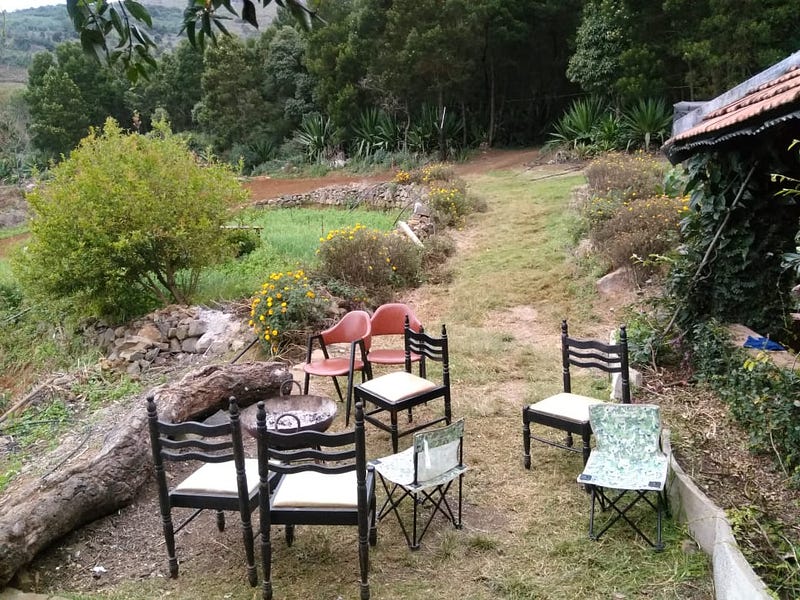
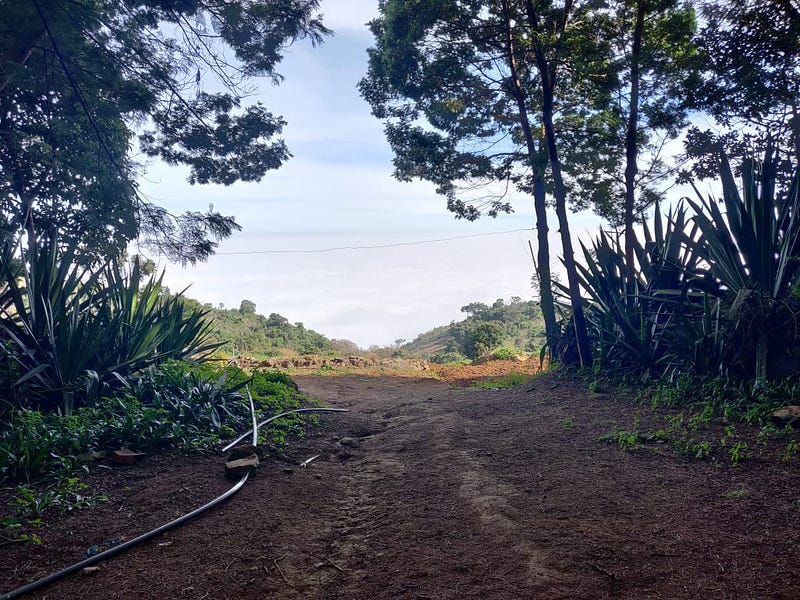
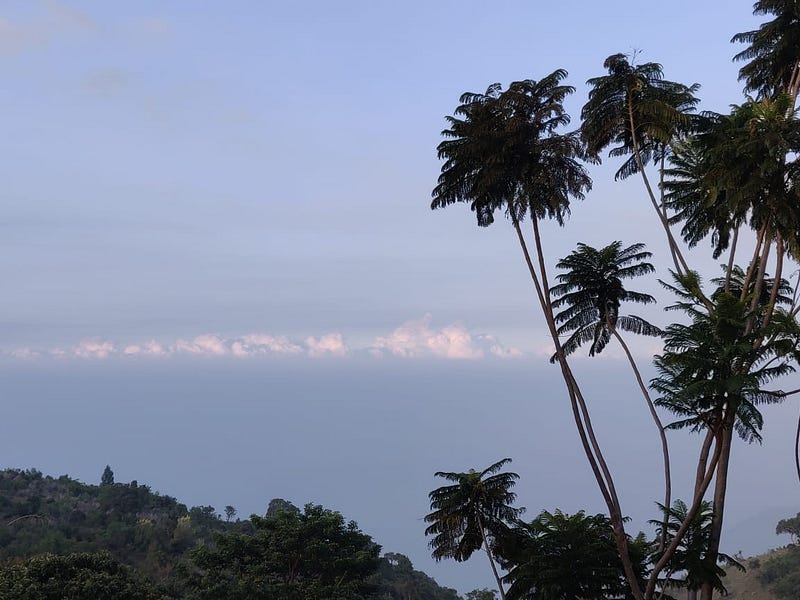
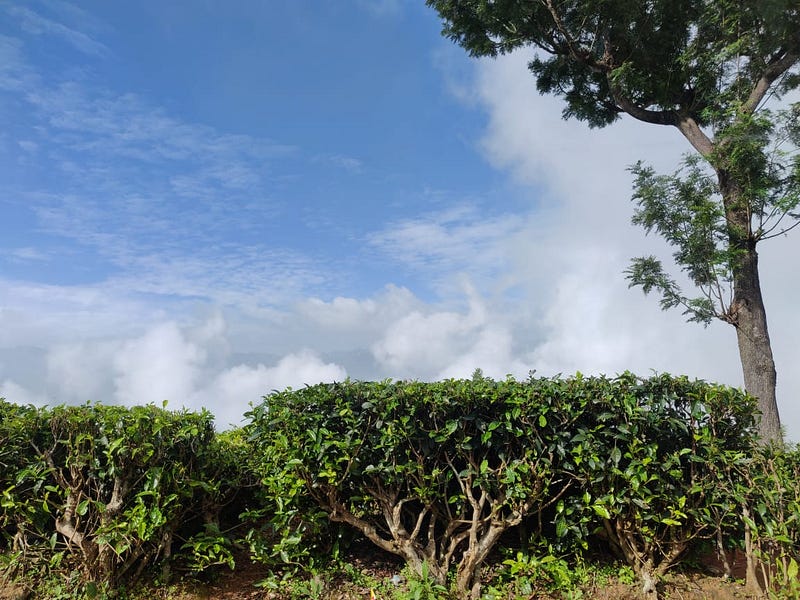

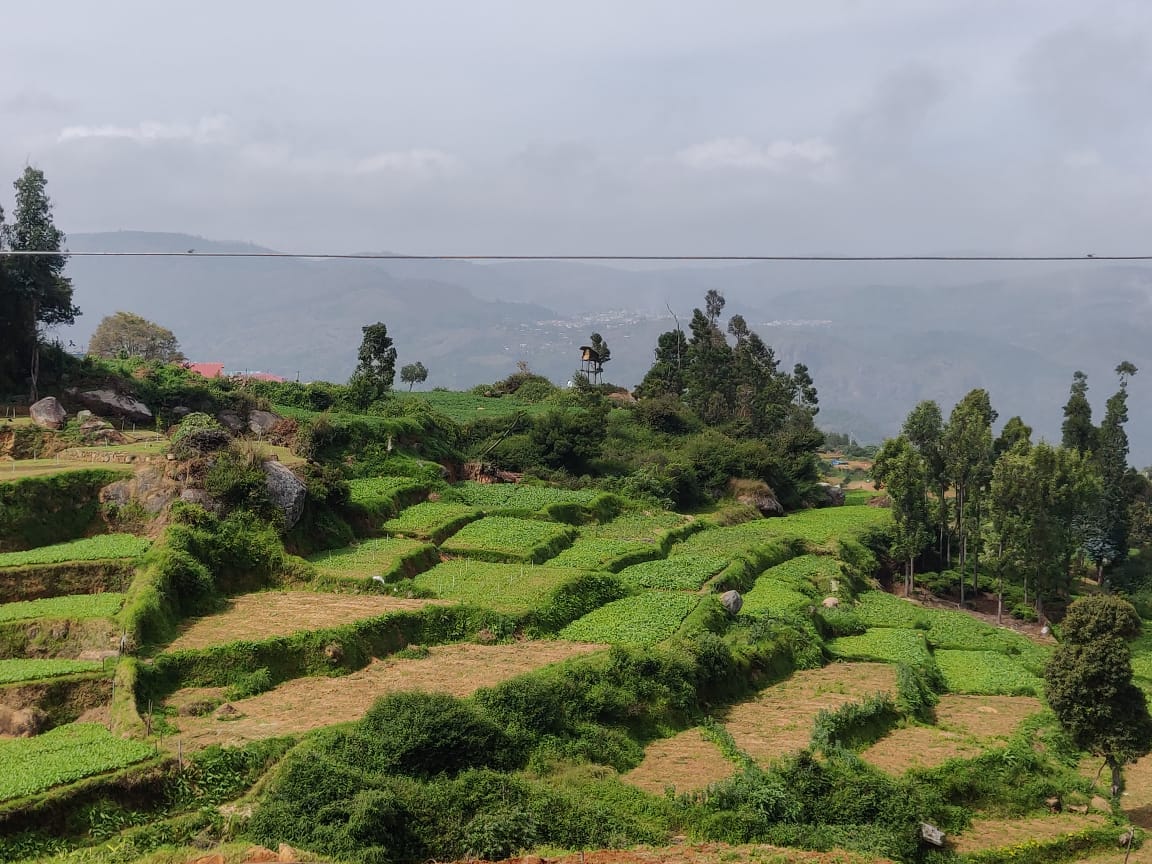
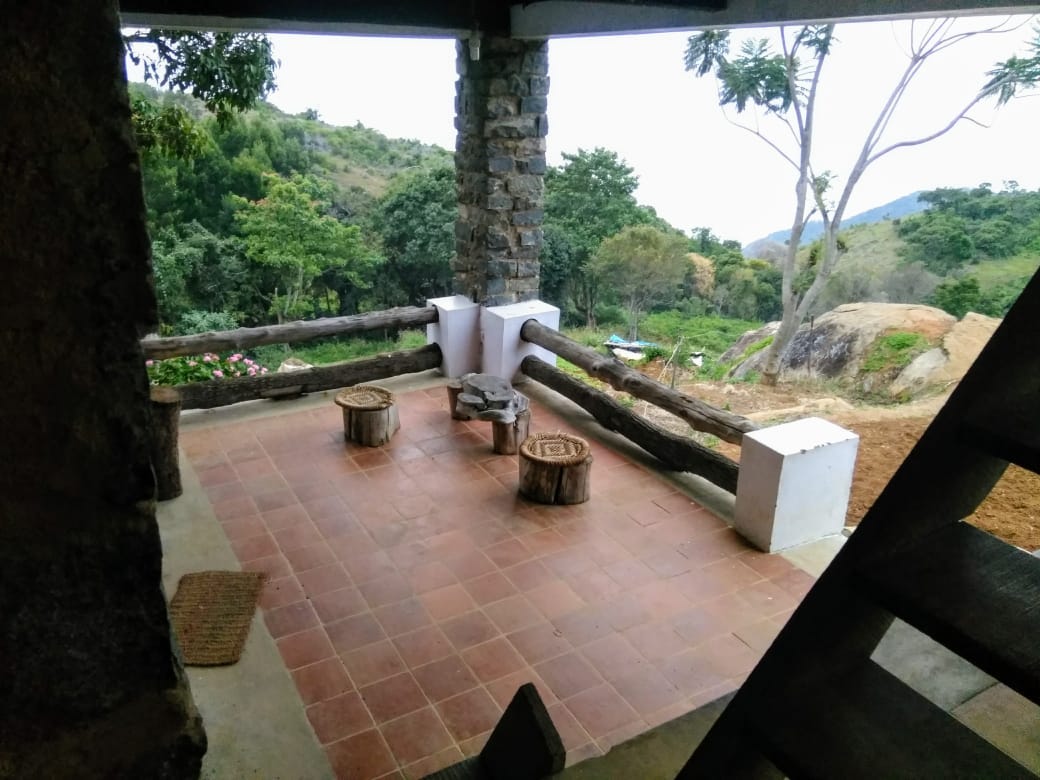
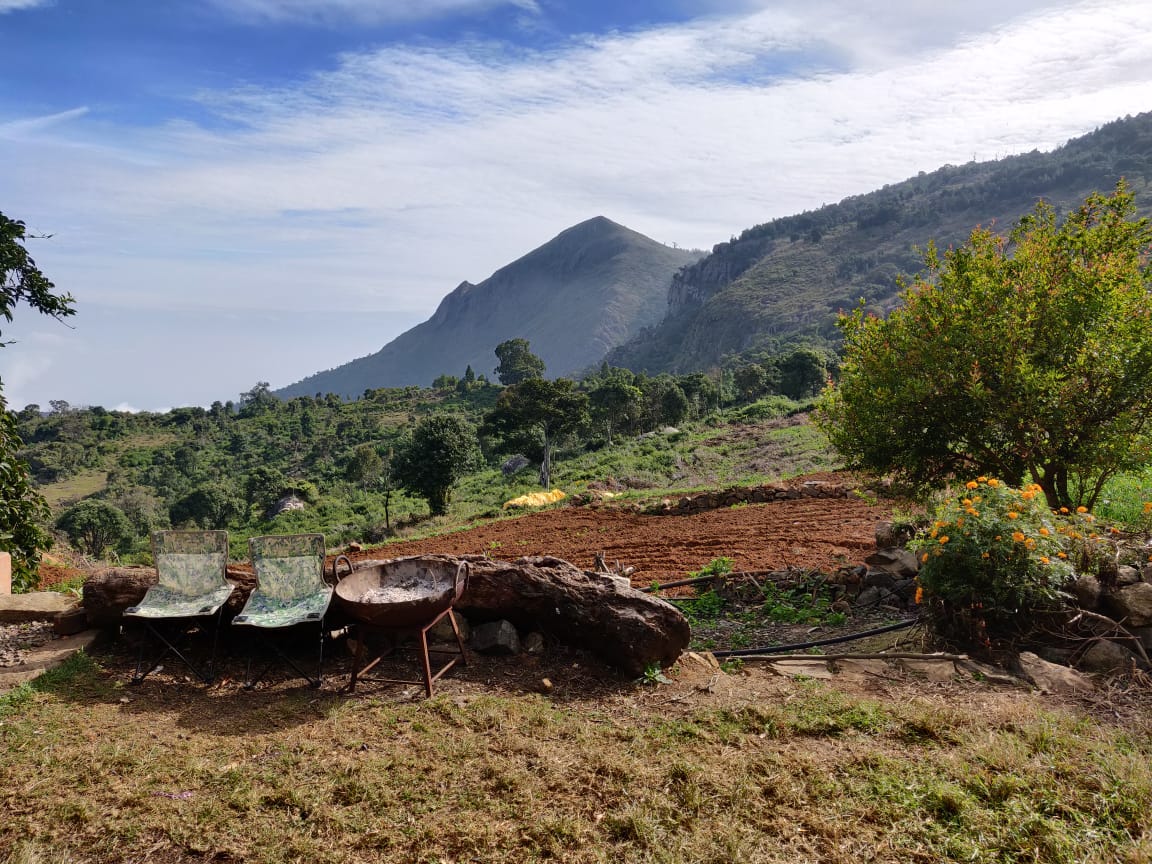
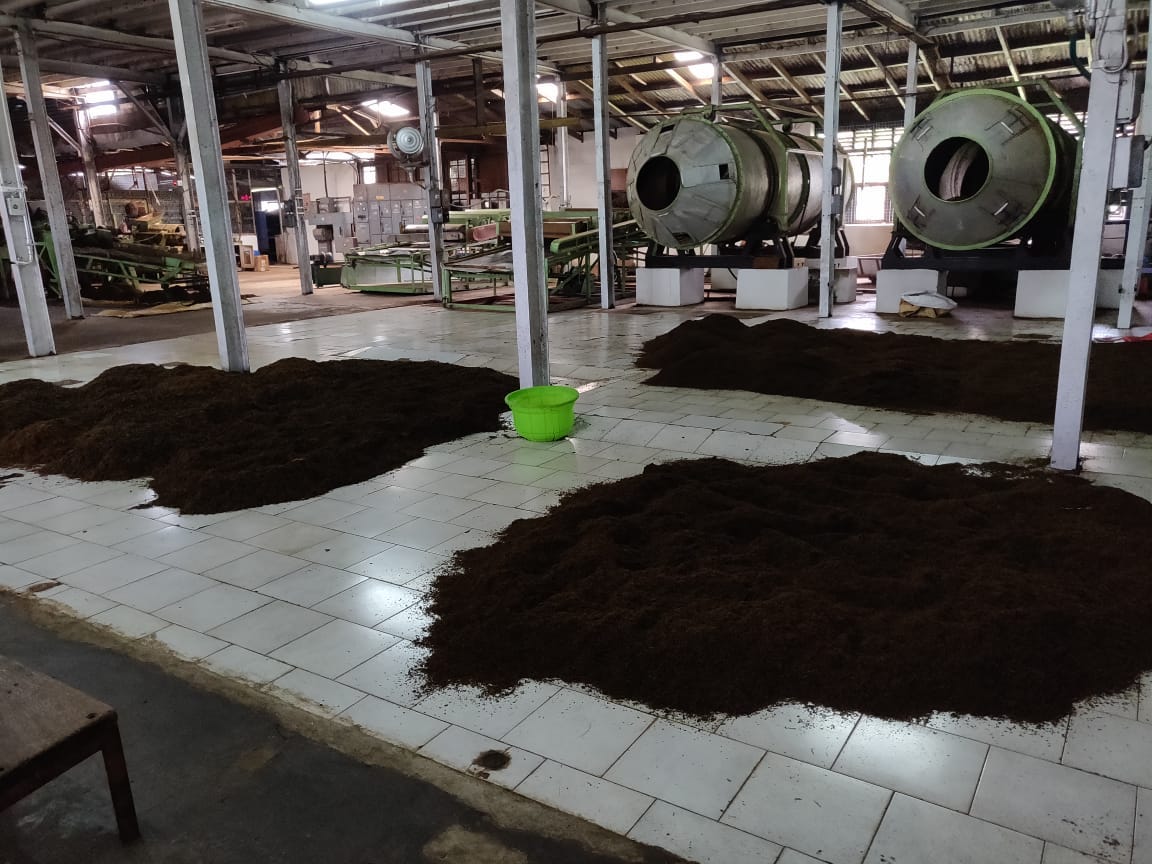
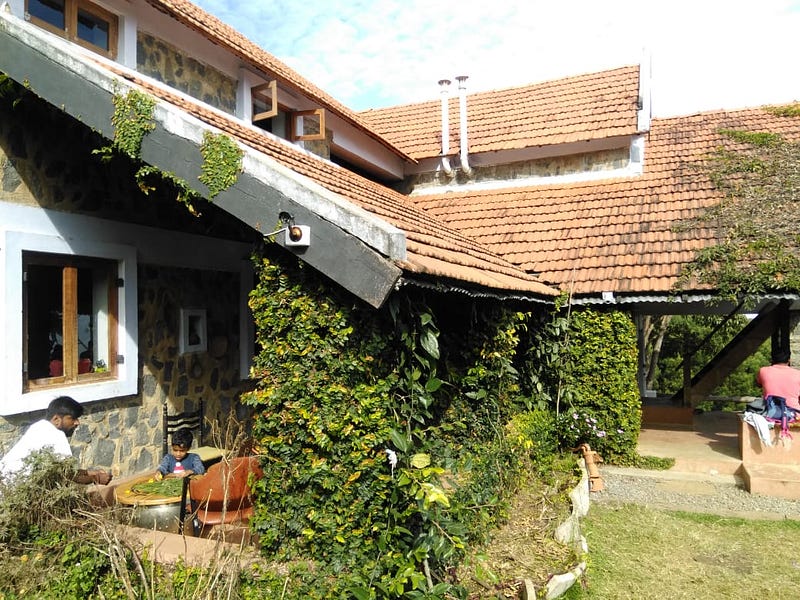
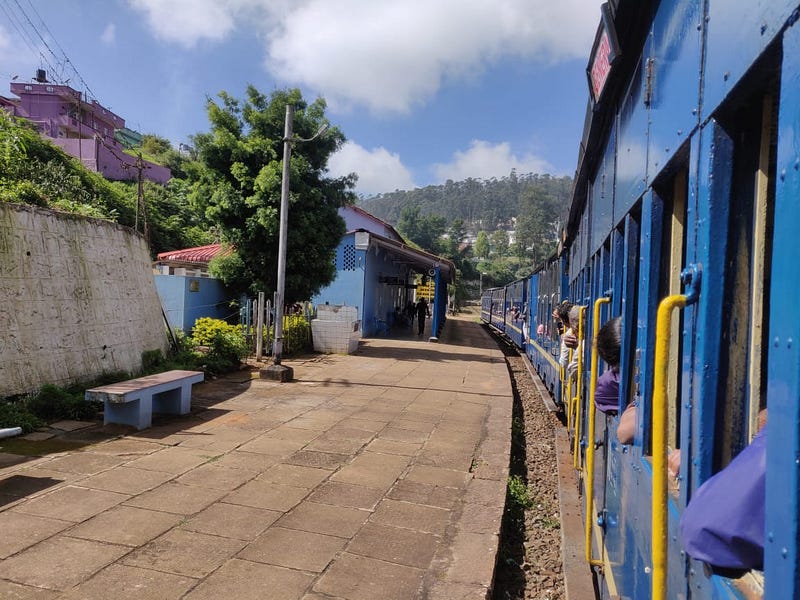
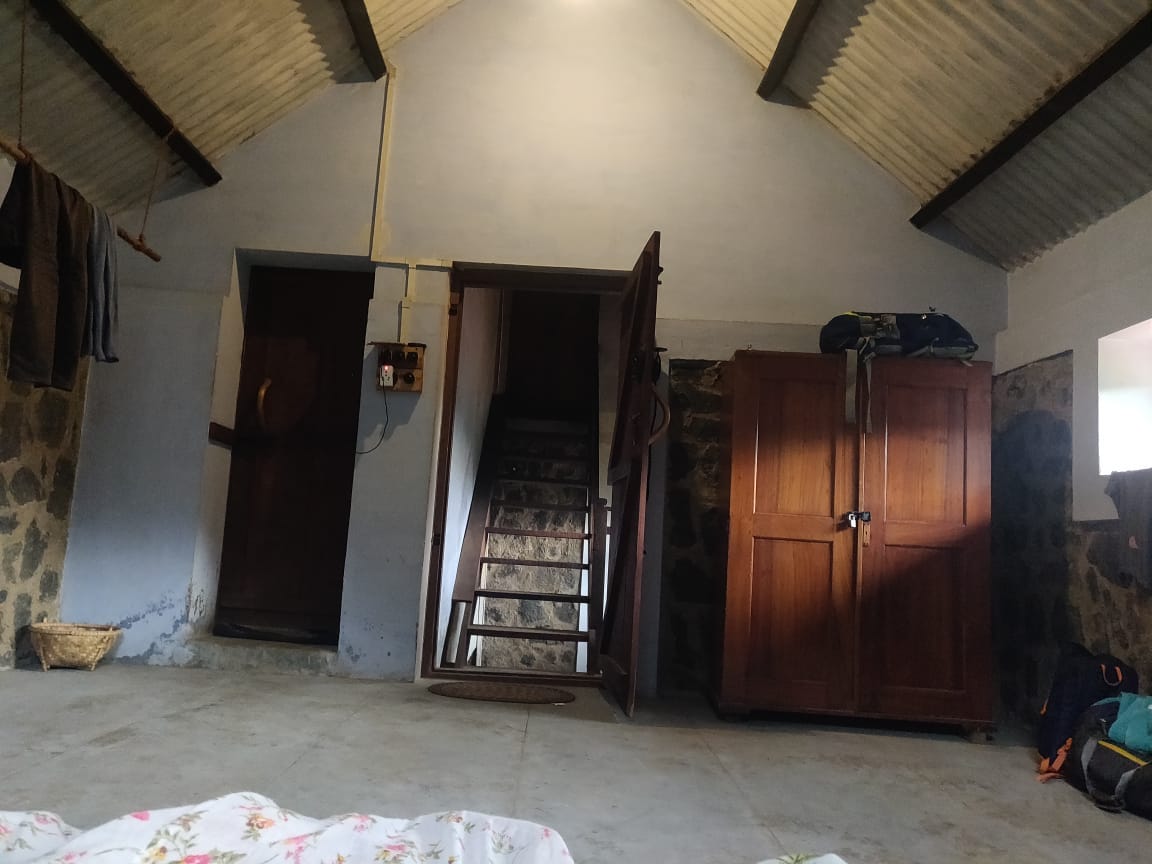



Buying a portable cooler for summer
- Get link
- Other Apps
We wanted the one with a height of around 4 to 5 feet with a swing action to give us full body air blow. Among the many tried and tested known brands was Symphony coolers.
We came across this one on amazon:
Symphony Diet 12T 12 Litre Personal Air Cooler
It comes with amazon prime delivery and has following features:
Air Throw Distance: 30 Ft
Capacity: 12 Litres; Ideal for room size up to 28 m3/ 1000 ft3. The drain plug is given at the lower back side of the tank
suitable for spot cooling or cooling smaller spaces withing your room
The Kernel Kobject device model explained
- Get link
- Other Apps
The Kernel Kobject device model explained.
A cheap alternate for Lava Lamps - Amazon.in
- Get link
- Other Apps
So we started searching for electric lamps which were not too bright and not too gaudy and which would aid and abet our sleep problems. Traditional Lava Lamps are a probably the best options for this, very high on aesthetics, and the color options available also serve the purpose. However they are too costly, starting from 2500 Rs, and there are rumors of duplicates which have manufacturing defects.
We came across this budget lamp, which used convection currents in the liquid rather than t he science used by Lava Lamps, the sparkles inside the liquid serve as reflectors for the 25watt reflector lamp beneath which diffuses the light in a wavy pattern creating a dreamy atmosphere in the bedroom.
Happie Shop 13 Inch Classic Retro Glitter Motion Peaceful Relaxation Lava Lamp Light (Blue)
The lamp is available in Red as well which we are using. See the demo below.
Handy garden spray gun Hose Nozzle - Amazon
- Get link
- Other Apps
We recently shifted to Bengaluru from Pune, for my Software Job. We are currently staying at my Wife's relative's house where there is a small garden to maintain. We have multiple rose bushes, jasmine and hibiscus bushes, some Jai-Jui, and Aloe-vera as well as show plants.
There is a lawn in the garden, which we use for leisure reading, and afternoon sleep. In between we shifted to this house and after the last tenant left, the plants were not taken care off. There was some leaf damage, as well lots of mealy bugs attack. We only had a 1/2 inch hose pipe to our rescue when we decided to start maintaining the garden ourselves. The pipe was also quite hard to work with, I am not sure of the terminology for the hose pipes but lets call it hard grade plastic. To generate pressure and a nice trajectory for washing huge leaves, we were facing issues with the pipe opening and it was also not comfortable to our hands, so we decided to search for a spray gun attachment for this pipe.
Amazon provides a variety of spray gun options for gardening and car washing purposes. After going through the reviews for many of them, I hooked up at the
"HOKIPO Plastic 7 Pattern High Pressure Garden Hose Nozzle Water Spray Gun with Connector"
The useful features:
1. Comes with prime delivery
2. Reviews ratings better than other weak counterparts, since others seem to have been reported manufacturing defects.
3. Comes with a Hose pipe snap connector so easy to fit.
4. plenty of spray pattern options especially the Long shower and Fire extinguishing Jet.
5. Has a always on start handle, so you don't accidentally open up the tap while the gun is off, this avoids any breakage to the pipe or the rubber connector to the tap due to high pressure.
Some features mentioned on the amazon website:
7 Watering Patterns: The Mist, Center, Flat, Cone, Jet, Soaker, Shower. Turn the spray nozzle dial to choose your setting.
Water Flow Control: A slide knob allows you to adjust water pressure as you need, and it can help save a lot of water.
Labor-Saving Design: This garden nozzle features a nice lock bar at the top of the handle that keep the water remains on without you having to apply any pressure. Just use the clip so you don't have to keep your hand holding it the whole time.
Fits All Standard Home Hoses -With its threaded interior and quick connect twist-on function, our garden nozzle is ready to use with most standard size pipe commonly used in India (5/8 inch) right away. But If you have thinner pipe (1/2 inch or similar) you can use it with the Connector given.
Perfect For: Watering Your Garden, Lawn, Grass, Flower Beds, and washing Your Dogs, and Pets.
I have used it quite often till now, and allows me to provide thorough wash to all our plants as well as does not create clogging or soil erosion due to its various smooth spray type patterns for watering garden soil.








